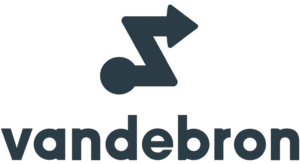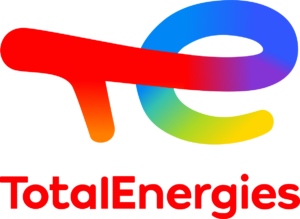
While organizations across every industry are pursuing digital transformation projects to maximize their efficiency and resource allocation, the imperative to “do more with less” is particularly keen for local government entities, who seek to serve diverse citizen end users as well as internal employees. This call to serve both audiences is what drove the Digitalization Unit at Karlskrona, a Swedish municipality serving ~66,000 citizens, to use process orchestration to power its back-office operations and future citizen self-service applications. The team chose Camunda’s process orchestration platform and partnered with leading Swedish IT consultancy Apendo, to implement and iterate on their solution.
As the project continues to develop and take shape, the team can recycle and reuse form templates, BPMN models, and other process orchestration elements to modernize several citizen services, making the day-to-day lives of both Karlskrona’s residents and civil servants more efficient – and easier.
Karlskrona wanted to replace their initial, homegrown workflow technology system with a modern, developer-friendly solution that would allow for a citizen-facing public interface and back-end process automation to increase the efficiency of citizen services and back-office processes. This ambitious project is just one example of the ways that the team is working to provide methods, tools and initiatives that disrupt or better support the work of their colleagues.
“We’re a seven member team, and we support 5,000 local government employees,” explained Per-Olav Gramstad, Business Developer at Karlskrona. “We’re the new kids on the block, trying to challenge the municipality’s current system of ‘administration to administration-business-citizen (A2ABC)’ with improved systems and the support for our colleagues to cross the technical knowledge gap.”
To improve city services, the team would need to devise and implement a solution that empowered the municipality’s applications, systems, and people to more efficiently handle information and enable all endpoints in the processes to “speak the same language.”
The team recognized that the task of improving city services is a multi-stakeholder challenge, with employees, business managers, IT developers, and end user municipalities all represented in the various processes. The modernization project was also a critical need, as the government was relying on a fragmented systems portfolio that siloed information between local government services and departments.
“We’re spending a lot of time connecting stuff like applications, systems, and people, and we realized we needed a common language,” Gramstad said.
This realization led the team to decide to find and implement process automation and coordination that would allow them to connect the dots for both employees and citizens through standardized technology, meaning faster, more efficient information gathering and processing – leading to faster services and happier citizens – and more satisfied employees.
Having identified the challenge as a lack of information sharing and coordination across the A2ABC ecosystem, the team designed a modeling process “from the outside in,” starting at the end with BPMN as a common language and identifying the deliverables as things that needed better coordination of shared information. The goal in improving these processes in this manner was to empower the Karlskrona employees to make better or more informed decisions based on the information collected and presented during the process.
Once those elements were identified, the team negotiated with their business stakeholder counterparts and agreed on how to design processes for improved information sharing in specific activities.
Since the team was interested in solving these inefficiency problems across the entire local governmental infrastructure, they also decided to focus on designing a solution from the outside in, looking for opportunities to reuse and recycle improvement elements across multiple processes and workflows.
The team first started with the information collection forms used across multiple internal employee processes, as well as citizens’ services. After standardizing the forms, the team planned to tackle modernizing the back-end processes that handled that data, from the application review process and collecting additional information if needed as part of that review process, to the final decision process.
The team set to work to build a self-service platform for form submission, which eventually connected to 200-300 external applications. The team “ping-ponged” back and forth between building out external forms meant to service citizen services to internal HR forms to build up momentum and to identify which forms and user tasks could be templated and reused. With this positive feedback, the team started connecting external and internal forms in the platform to make an end-to-end system, and began testing proof of concepts for the processes they hoped to modernize.
However, the team quickly realized that this platform wasn’t built for workflows – it simply couldn’t handle multiple processes sharing information and coordinating tasks. Gramstad knew that they needed a process orchestration platform to coordinate the levels of complexity that were built between these processes, and that this platform needed to support BPMN as the common orchestration language.
“Our team had become quite sophisticated at managing forms and platform integrations, but there was too much data and layers of complexity,” Gramstad explained.
Gramstad had used other process orchestration platforms in a former role, and investigated whether it would be a good fit for Karlskrona’s needs with some initial process modeling. But he quickly grew frustrated with the limitations and lack of flexibility that the platform offered. Whenever the team tried to add a layer of complexity that the municipality’s unique processes required, the process platform couldn’t handle it.
“There were lots of gaps in these platforms,” Gramstad confided. “To combat it, we became very good at integrations, but eventually we had a swamp of integrations and systems,” which came from trying to tie processes together for end-to-end orchestration, or to incorporate templates across multiple processes.
“We needed a technology solution that would act as the floor for our needs,” he explained, stating that their goal was to find an orchestration platform that allowed the team to build up their needs acting as a “floor” for their technology projects, as opposed to a limiting technology that would act as the “ceiling” and dictate how they could build their processes.
Gramstad and his team discovered Camunda, and appreciated its flexibility immediately. The platform could handle multiple layers of complexity, from the container level of their forms to the more free-flowing data collection and parsing needed at the content level of the forms powering the back office processes the team wanted to modernize. With transparent, flexible pricing options as well, Gramstad and his team chose Camunda, and turned to leading Swedish IT consultancy firm Apendo to help support the implementation.
“The open-ended, inside-out architecture was a great fit in both technology and business model for us,” confirmed Gramstad.
Apendo’s extensive experience partnering with government entities and municipalities on digital transformation projects made them an ideal partner for Karlskrona. Apendo has used Camunda in the past to power hyperautomation platforms that enable end-to-end process automation and orchestration, bridging the gap between citizen end users and government applications.
Apendo saw the value that modern, cloud-native solutions bring to municipalities like Karlskrona, even when these solutions need to be run on private clouds on-premises, as most mid-sized and large public agencies in the European Union require.
“Our motto is ‘your strategy, your choice,’” Ekberg explained.
This ethos was valuable in Karlskrona’s implementation; since the team was already sophisticated and experienced enough to handle most of their own implementation needs, Apendo served more as a consulting service providing guidelines and best practices for the team throughout their project. In fact, this inherent sophistication is one of the reasons why Camunda’s flexible, developer-friendly approach was attractive for this project to begin with.
“Apendo was a lucky strike,” Gramstad confided. He found the team easy to work with, attentive to his team’s needs, and laser-focused on challenging areas of the project.
Camunda’s powerful process engine helps Karlskrona simplify information provisioning with external services and coordinates process design with easy “Build-Model-Run” features. Starting with the form used in the application process, the team models their way to the end of the application using BPMN.
As the information is gathered, collected, presented, and acted upon in activities, colleagues save time previously spent on doing this in a more manual fashion, increasing their efficiency and their satisfaction with their workloads. Prior to Camunda, the team had only one large, long-running process in place internally. Now, the team has been able to orchestrate ten large-scale, complex processes.
“In local government, the challenge isn’t the volume, but the complexity of the processes we need to run,” explained Gramstad.
Where historically local government employees spent inordinate amounts of time collecting data and verifying its accuracy, the information is now collected via form, and process automation parses it and delivers it to the human managers who need to make decisions.
Powered by process orchestration through Camunda, Karlskrona have changed the maximum overall lead time from a year to a month in their first batch of processes, which center around internal HR processes.
In 2023, Karlskrona launched the managers’ HR-to-do-list, which is automatically fed by the HR processes automated with Camunda. This is a highly valued tool for Karlskrona managers, and is prominently displayed in the local government’s HR portal, facilitating easy access to a number of HR decisions.
The experience of working with Camunda and Apendo to implement process orchestration has changed the Karlskrona municipality’s perception of workflows, shifting from seeing the process as a container to orchestration of shared activities. Their approach moves from single process-based work to activity sharing.
“Before Camunda we were struggling with how to get a better grip on the activities needed to provide a more easily accessible decision,” explained Gramstad. “Now that we are up and running with Camunda, we have a tweezers grip on these activities, enabling us to hold and form in a more comprehensible way.”
Building off the success of the process orchestration work around Karlskrona’s internal processes, the team is expanding the scope of the project, planning an employee portal that will house the HR services that were initially built for the government’s e-service platform.
The team also hopes to standardize business process development and information collection; to accomplish this, the team aims to launch a portal for individual process owners to improve how they interact with the development and support of their processes. This project can help further bridge the historical gap between IT employees and their business counterparts, improving communication and efficiency.
Finally, Gramstad and his team plan to use the templates already built and lessons learned from this initial project to build a complementary citizen’s portal, so that Karlskrona residents can easily request and submit information for several local government services, and local government employees can more efficiently review and act on these requests.
“We want to empower citizens to act as their own case managers,” Gramstad explained. “To do this, we are looking for the patterns that we can reuse to increase our orchestration speed. This is why process modeling is so important.”
Apendo continues to serve as advisors to Karlskrona, leveraging their deep technical knowledge and wide experience supporting digital transformation initiatives for public agencies and governments.
“With our Camunda-powered hyperautomation platform, there is flexibility to meet the unique needs of public agencies,” Ekberg said. “It doesn’t have to be prohibitively expensive for municipalities to use this type of software.”
Gramstad agreed, stating “In our experience, other technologies were limiting. It’s important that the technology is where you start, and it empowers you to build your solution as high as you want. We’ve experienced that with Camunda.”





Camunda © 2024